Blisters are the worst. Almost nothing can ruin a backpacking trip faster or more completely than a bad blister or two. And once you have one, you’re pretty much stuck with it until you can give it a chance to heal. That means popping it, disinfecting it, and moleskinning it at the very least.
So, as the saying goes, an ounce of prevention is worth a pound of cure (not in the literal sense for you ULers, but you get the idea). And I don’t think there is any better technique for blister prevention than Leukotape.
Note: As an Amazon associate I earn from qualifying purchases. If you click through one of the links on this page and make a purchase, we receive a small commission at no extra cost to you. It helps keep us up and running and able to continue to provide great content. 🙂
What Is Leukotape?
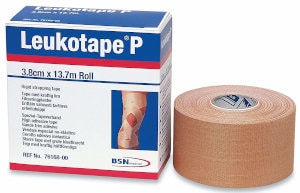
Leukotape was originally designed as a sports therapy tape. It’s that brown (sometimes colored) fabric that you see marathon runners and professional athletes wearing. It's a killer combination of super sticky zinc oxide and rigid, high tensile strength rayon surgical tape.
It was originally designed for holding muscles and joints in the right place to heal from injuries. But it has an unintended (and better) use as a blister prevention tape.
How Leukotape Works
First, I will say that Leukotape isn’t the only step in prevention. Managing moisture and wearing the right socks are both important, but Leukotape can jump in and save the day like nothing else can.
The idea with Leukotape is that when you get a hot spot (a localized area of noticeable friction happening on your foot) you put some Leukotape on it before it has the chance to become a blister. The tape provides a barrier between your skin and whatever is causing the friction, stopping the blister from forming.
You can also be extra preventative and put it on spots that you already know are prone to blisters. I certainly have done this, and while it means you probably need to switch footwear, it’s a good temporary technique. And sometimes when you know you're in for a long, wet day, it's best to tape in the morning just in case.
What Makes Leukotape Special?
Leukotape works so much better than anything else for a few reasons:
- Extremely sticky - For tape to work, it has to hold tight and stay, and man does leukotape deliver. This stuff sticks to skin better than anything else you can buy (that won’t also severely damage you). That extends to hot and/or wet conditions as well.
- Breathable - You shouldn’t leave it on forever, but unlike duct-tape the cotton-rayon material breathes pretty well. It can be left on for a lot longer without issues.
- Tearable - You don’t want to have to pull out your knife or bring a special pair of scissors to cut your tape. Leukotape rips fairly easily in both directions (though I find it rips crossways better if you 'start' it by biting it).
- Skin-friendly - I love that at the end of the day you can pull it off and it doesn't hurt, rip skin, or leave sticky residue. It does include latex for those with allergies, but aside from that it's great on skin.
- Affordable - At less than $10 for 15 yards of tape, it's super affordable. This is especially true considering how long it lasts.
Which Leukotape Should You Use For Blisters?
BSN Medical, the company that makes Leukotape, makes two different versions; Leukotape P and Leukotape K.
I've seen some confusion about the difference between the two, and which one is better for blisters, so I'll clear that up here.
Leukotape P is the original. It has extremely low stretch, so it's good for taping spots that require no range of motion. It also uses zinc oxide adhesive, which sticks very well when wet or warm. Leukotape P is the tape I use and recommend for blister prevention on your feet.
Leukotape K is similar to Kinesio Tape (or KT Tape) in that it stretches. It's great for athletes who need to maintain range of motion, but that stretch doesn't necessarily help prevent foot blisters. It's also .5 inches wider than Leukotape P, making it a little more difficult to place comfortably on your feet.
If, however, you get blisters on your hips or shoulders (as heavy packs can do), Leukotape K might be a better option. It isn't quite as effective or sticky as Leukotape P, but its stretchiness won't hinder you and it'll still help prevent blisters.
Most of the time, I just use Leukotape P.
How To Apply Leukotape
- Start by making sure your feet are as clean and dry as possible. Any dirt under the tape will just create worse blisters, and it won't stick well to already wet feet (once it's on you can get your feet wet all you want).
- Apply the pieces to your hot spot as straight as you can. Creases and folds can catch on your socks, reducing its stickiness lifetime. If it's a weird spot, you might have to cut a few small pieces and 'patchwork' it. If a little crease is unavoidable, crossing a piece over it in the opposite direction should take care of it.
Another big thing to make sure of is that you don't wrap the tape all the way around your foot. It doesn't stretch at all, so it can constrict blood flow and mess up your foot muscles.
I’ve seen people talk about applying benzoin tincture to help it stick better, but I think it’s unnecessary. I’ve worn leukotape for 5 or 6 days in a row through creek crossings, lake jumps, sweaty feet and even a shower without it even hinting that it might fall off. That’s not exactly recommended, as your feet need to breathe, but it's plenty sticky on its own.
How to Store Leukotape in The Field
You can't apply leukotape if you don't have it on hand in the first place. And since you don't want to carry around the whole roll, you need a good way of storing it.
There are two methods that I like;
- Sticking strips to release paper
- Rolling it around a plastic straw or piece of a pen
How To Use release Paper
Release paper is the paper that mailing labels and stickers are stuck to. You can probably buy it somewhere, but it's just easier to buy 8.5x11 labels, pull them off, and replace them with strips of leukotape.
I recommend just running five 10ish inch strips down the paper lengthwise and cutting between them to separate. Then roll them up and put them in a film canister (or whatever else you store your first aid kit in).
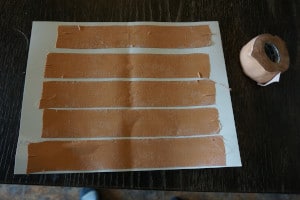
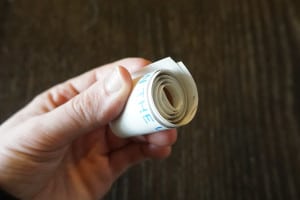
Release paper is great because the tape comes off really easily and maintains all it's stickiness. The downside is release paper is relatively bulky and heavy, so if you need to carry more tape the straw/pen method is the way to go.
How To Store Leukotape On A Straw or Pen
This method involves snagging a plastic straw from your local McDonald's (or just use a cheap pen or mechanical pencil; it works better). Cut it short so it's just a little longer than the leukotape is wide. Then roll the leukotape straight off the original roll and onto your improvised one.
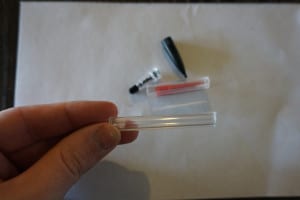
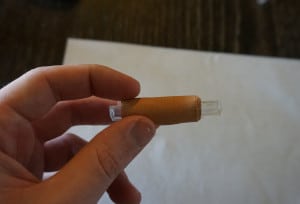
The downside to the straw roll strategy is that you don't know how much you're bringing unless you measure it as you go and take note. The tape also doesn't stick to itself perfectly once you unroll it (but it works pretty well as long as you keep it taut).
Whatever strategy you go with, test and make sure you did it right before leaving on a trip where you'll need it (learned that one the hard way).
Other Uses for Leukotape
It wouldn't be an 'ultralight' item if it wasn't multi-use, right? Leukotape can be used in the field for more than just blister prevention if neccessary. Other uses include;
- Sports therapy tape - Turns out you can actually use leukotape the way it was designed if you need to (who would've thought?). If you get seriously injured (muscle tear, sprained or torn ligaments) you can use it to hold stuff in place until you can get back to civilization.
- Improvised band-aid - It sticks way better than store bought ones, so bring some small sterile bandages along too and leave the band-aids at home.
- Gear repair tape - I can't speak to how well it works compared to duct tape, but I'm sure it could hold stuff together if you needed it to.
Final Thoughts
Leukotape is an amazing, all-in-one solution for blister prevention. Using the right socks and shoes is definitely the key to long term blister reduction, but when you have an unavoidable hot-spot situation leukotape is worth it's weight in gold (again, probably not literally).
Unfortunately for those with latex allergies, leukotape is made with latex. There are various other tape brands and I'm sure some of them are latex free, but I don't have enough experience with them to make a recommendation. If you have a good one you'd like to share though (or any other thoughts), let me know in the comments!
